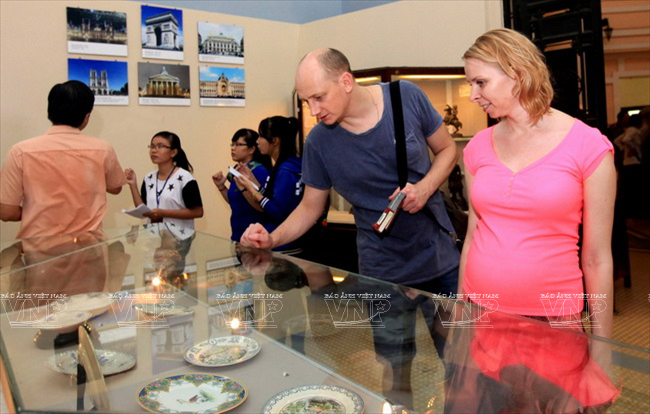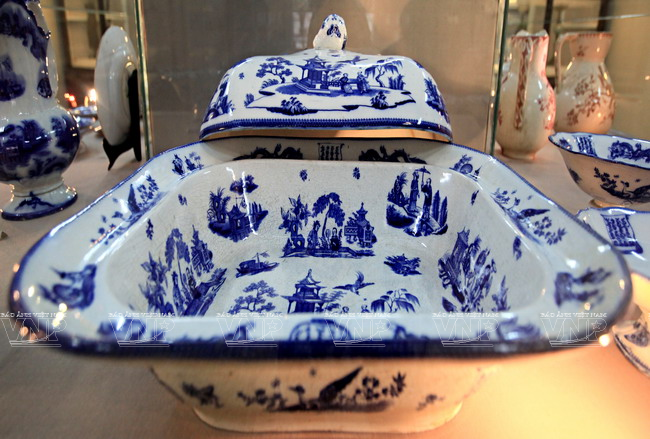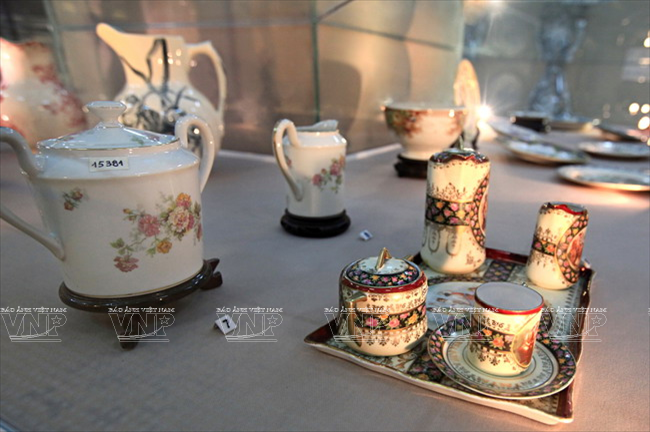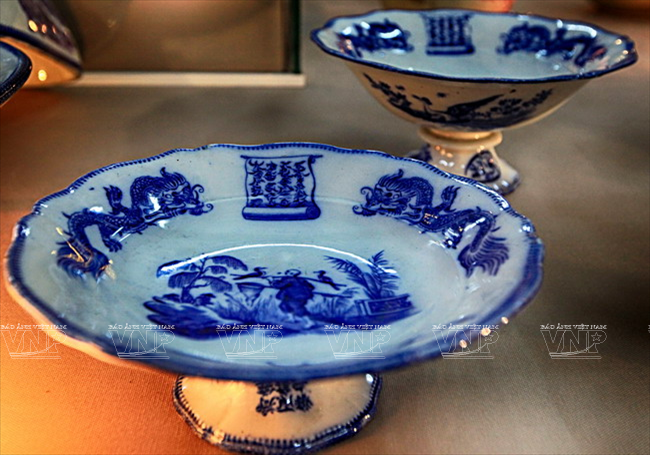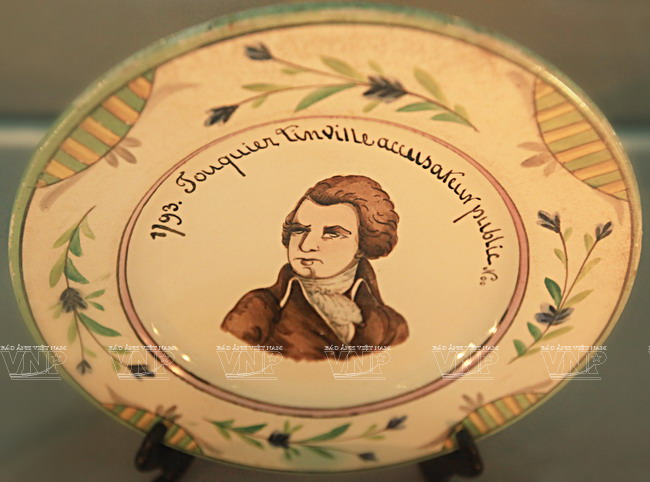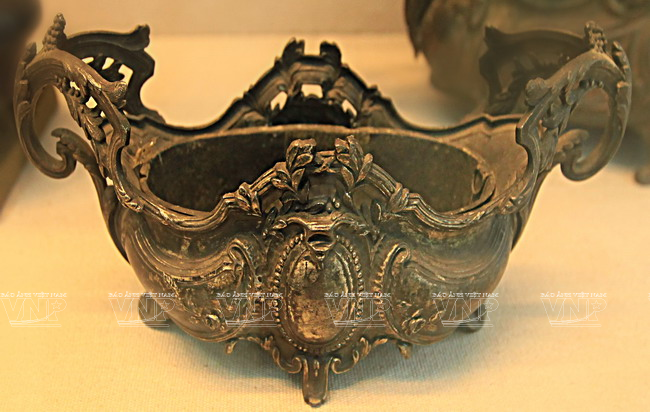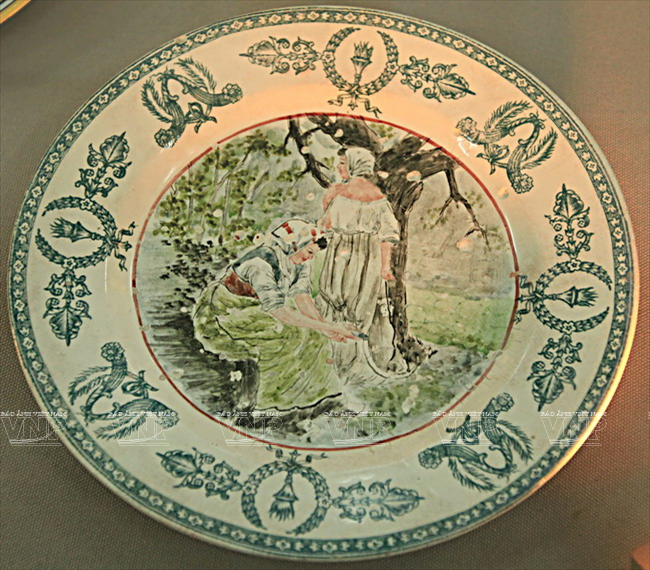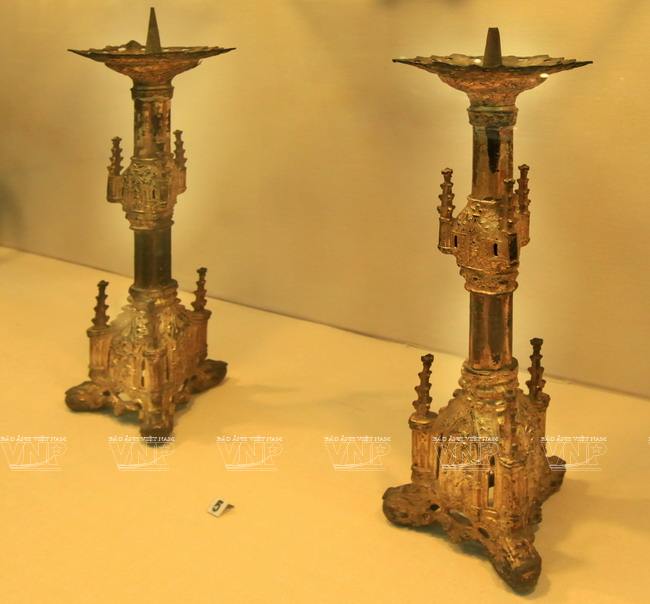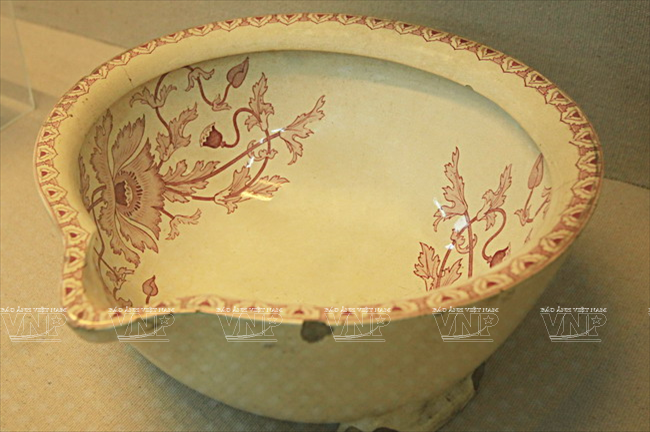 Nearly 100 French antiques are exhibited at Ho Chi Minh City History Museum. Photo: Dang Kim Phuong /VNP |
The dinner set which was made from white glazed ceramic for only French noblemen in the 19th century, is the highlight of the exhibition. It is interesting that the set is a combination of eastern and western styled patterns. For instance, a plate in the set was decorated with a picture of “Seven Intellectuals in a Bamboo Forest”, which is a totally Eastern concept with all the seven men wearing Oriental clothes but with faces of Westerners. All the pieces in the dinner set have the stamp of Jules & Vie workshop in Bordeaux in the 19th century.
The exhibition also features a pair of Bertin vases which belong to a set of four vases named Spring, Summer, Fall and Winter made by Antoine Francois Dalacour by mold casting in 1859. The vases are 1 meter high with a radius of 0,6m and the reliefs were decorated by Léopold Joseph Gély using kaolin powder. It is recorded that the vases were presented to Napoleon III (1808-1873) as a tribute but few details are available about how the Spring and Winter vases ended up in Vietnam.
On display is also a ceramic plate with a portrait of Fouquier Tinville made in 1793. He earned a reputation as one of the most sinister prosecutors of the French Revolution (1789-1799) for prosecuting and condemning to death several figures such as Marie Antoinette, French nobleman and chemist Antoine Laurent de Lavoisier, Princess Elisabeth (Louis XVI’s youngest sibling), Madame du Barry (official mistress of Louis XV) and the poet Andre Chenier.
One of the most striking bronze antiques on display was a statue of Napoleon Bonaparte (1769-1821) on horseback. The posture and clothes of Napoleon Bonaparte shows that the statue is a replica of the famous painting of “Napoleon at the Saint-Bernard Pass” or “Bonaparte Crossing the Alps” painted by French artist Jacques Louis David between 1800 and 1803.
 A metal statue of Napoleon from the 19th century. Photo: Dang Kim Phuong /VNP |
What attracts visitors is that each exhibit is linked with an interesting occasion. The exhibition also represents French components which once existed in Vietnamese cultural history of diversity.
The exhibition will be open until June 2015 at Ho Chi Minh City History Museum (No. 2, Nguyen Binh Khiem Street, District 1, Ho Chi Minh City).
Photos: Dang Kim Phuong

